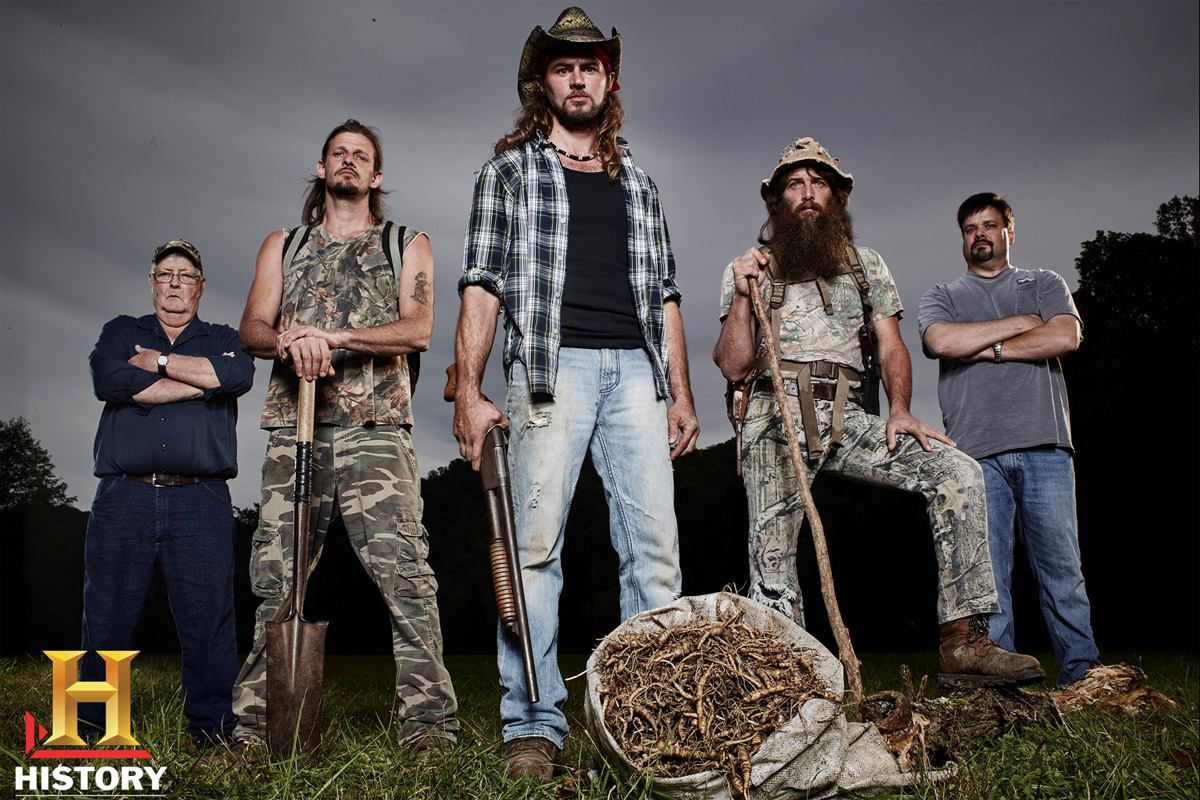The History Channel featured a new show this year that focused on ginseng in Appalachia. According to Neilson ratings, Appalachian Outlaws was one of the most popular on cable channels, averaging more than 2.7 million viewers for each of its six episodes. There’s no official word if season two is in the works, and while some fans are hoping that there will be a second season, other people are hoping the show will just go away.
Appalachian Outlaws is another reality-esque, loosely unscripted TV show brought to you by the same network that airs Pawn Stars, American Pickers and Vikings. While many viewers are intrigued by the unusual characters and drama, others think the show is downright irresponsible. “Sangers”—ginseng hunters—and experts agree that there are many inaccuracies.
Kerry Johnson is a “sanger” from McDowell County, West Virginia. He says some of the big money shelled out in the show for freshly dug ginseng is misleading.
“Anyone who pays $550 for a pound of daggone ‘sang’ is green,” he says.
He also doubts how much ginseng some of the characters are harvesting.
LISTEN: “Conservationists Call Out Appalachian Outlaws“
“There’s such an amazing story to be told, and instead they’re glorifying individuals going out and poaching on public land, on private land,” says Susan Leopold, executive director of United Plant Savers. “That doesn’t serve any purpose other than trying to portray negative behavior to get ratings, and I think it sets a terrible precedent.”
Her organization’s mission is to protect native medicinal plants of the United States and Canada. Together with American Herbal Products Association, she sent a letter to A&E Networks imploring them to “correct the record” by including additional conservation information for viewers.
So what is this valuable plant that’s got everyone so excited?
Wild American ginseng has been harvested from North America since the 1700s. Demand for the plant’s root comes from Asia, where plants like ginseng have been used medicinally for over 2,500 years. It’s a serious market. A pound of quality, dried ginseng can easily sell for $400-$900. But that’s wild ginseng, or wild-simulated—which means it’s being grown under watchful eyes in forested areas where it would naturally grow, if it had a chance.
The up-shot is that the plant is at risk. It’s been declining in numbers and it faces a lot of threats. In fact, it’s listed alongside things like ivory, shark and mahogany on CITES, the Convention on International Trade in Endangered Species—an international agreement between governments, which exists to protect species against over-exploitation through international trade.
WATCH: “Appalachian Outlaws Season 1 Trailer”
Eric Burkhart, the plant science program director at Shaver’s Creek Environmental Center at Penn State University, says there are a variety of pressures on American ginseng. He’s been studying ginseng for over a decade.
“So this is listed under CITES, as are a number of other products, including animal parts like ivory. And I find it difficult to believe that the History Channel or any other major US network would choose to glorify the poaching and killing of animals and portray it as some kind of entertainment,” he says.
Burk and Leopold are both disappointed by the show. They say the History Channel missed an opportunity to educate viewers by focusing solely on entertainment. They and many academics and conservationists are worried that the culture of flouting rules and regulations will tear at the fabric of their work to conserve and preserve the plant and the forest that enables the plant’s existence.
“The silver lining here is that it has generated a lot of interest in American ginseng, for better or for worse.” Burk says. “A lot of the positive interest has been coming in through people contacting me for information—not only about collecting. More importantly, in my mind, people are interested in growing the plant—figuring out how they can establish a patch on their own forest land for income or conservation.”

